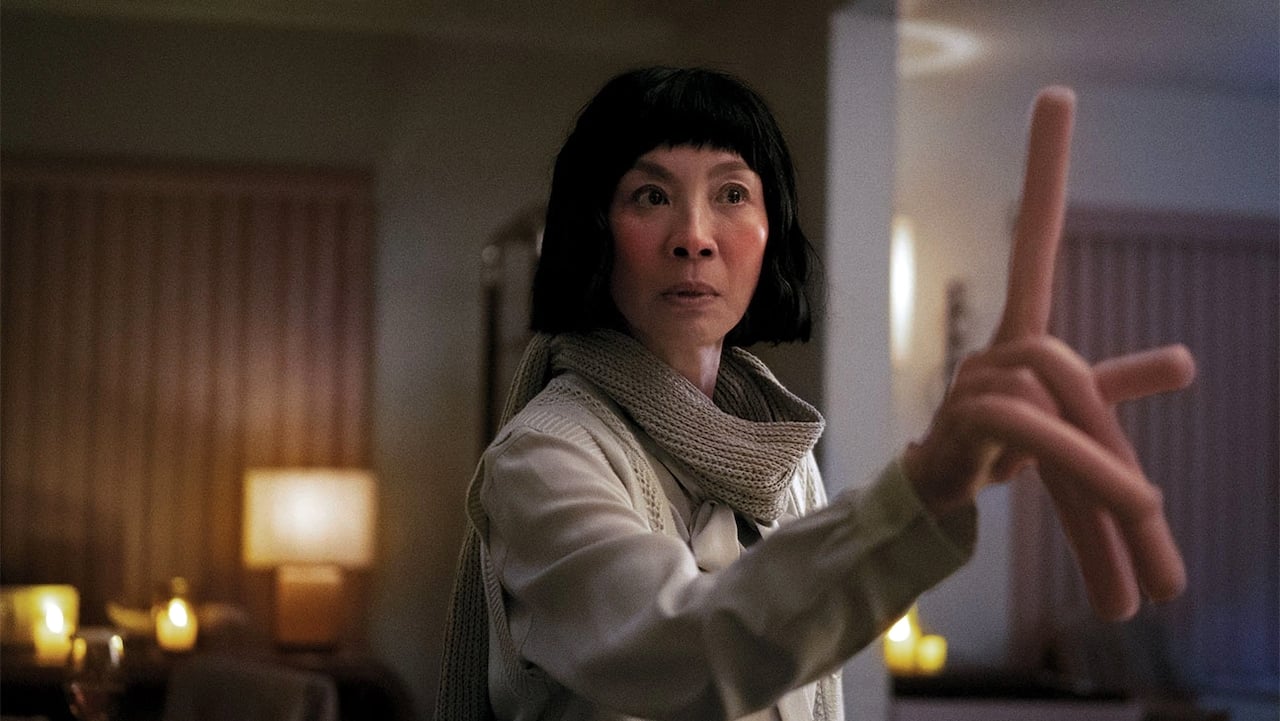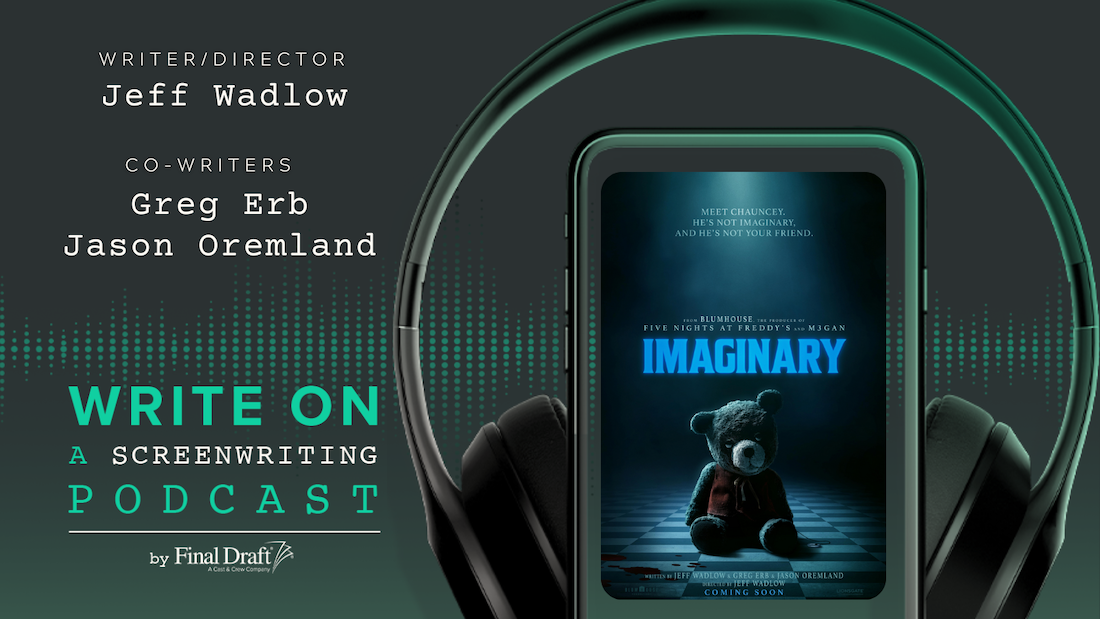Cocaine Bear Writer Jimmy Warden on Creating Empathy for a Coked-Up Bear on a Rampage
March 4, 2023
Cocaine Bear is a hilarious romp about two potentially alarming things: a ferocious bear and a massive amount of cocaine. Put them together and you get one of the wildest, most absurd, genre-busting films ever made. The idea is so ludicrous, it probably wouldn’t work unless it was based on a true story – which it is.
Sadly, the real bear (now taxidermied at a Kentucky mall and known as “Pablo Eskobear”) fatally overdosed after ingesting 75 pounds of the powdered stimulant that was dropped from an airplane by drug smuggler Andrew C. Thornton in 1985. Tragic yes, but the twisted mind of screenwriter Jimmy Warden decided to ask the question: what if the bear lived?
Jimmy Warden says he came across the true story in the beginning of 2019 when he hit a wall with another script he was writing. “I did what all writers do, well maybe not the smart writers,” says Warden with a laugh, “I just started scrolling through Twitter.”
Warden claims he wasn’t looking for inspiration for a movie, it was really just procrastination. But when he found this strange story, he became obsessed. While he thinks the story of the drug dealer Thornton is a great story on its own, “I knew that I wanted it to be about the bear, um, doing cocaine.”
And surprisingly, a box office hit was born. Cocaine Bear made $23 million opening weekend, just behind Ant Man and the Wasp: Quantumania, which isn’t bad considering the protagonist isn’t a superhero or even human.
But here’s the thing – while a movie called Cocaine Bear could have easily hit one funny note and then fall flat (i.e.: Snakes on a Plane), Warden took writing the script very seriously. He paid special attention to his protagonist, a bear lovingly called Cokey by the filmmakers, and he surrounded Cokey with a dynamic chorus of characters that would buttress the story when the bear wasn’t on screen. He shared the details with Final Draft on on how he did it.

A redemption story for the bear
One of the earliest decisions Warden made as he sat down to the write the script was to have the bear stay alive after ingesting the coke. “It’s a no-brainer now, but it was a critical decision for me because in the true story, sadly the bear died of a drug overdose probably minutes after ingesting all the cocaine. We always spoke about this story as being a redemption story for the bear. What I needed to do was redeem the bear after all the carnage it did in the woods. No spoilers, but you kind of want the bear to be the hero at the end,” says Warden.
Next, Warden says he had to take seriously the bear’s intentions, so it didn’t feel like a parody or a joke. “I thought the bear needed to be female to get that empathy from the audience.”
Everyone understands to a mama bear wanting to protect her cubs. Having that strong motivation is very believable and easily translates to a human mother as well. In the film, Sari (Keri Russell), goes searching the woods for her own kids, knowing that a killer bear is on the loose. Suddenly the stakes are higher for both mother characters – the bear and Sari. “You have those two parallel story lines and I think that created a lot of empathy for the bear – you wanted her to win,” says Warden.
In terms of writing how a bear would behave on narcotics, Warden says thankfully there aren’t any videos to research. Instead, he just remembered back to craziest people he met in college and how they acted while high on cocaine. “I blended that with what I know from watching bear attack videos and the aftermath of bear attacks. I figured the bear would almost act like a human – it would just be exaggerated to a hundredth degree.”
The ensemble
“There’s only so much you can have in a movie about a bear doing cocaine and attacking people so I knew I wanted to write an ensemble,” says Warden. “Setting the film in a National Park was perfect in terms of trying to create interesting characters. If you think about who could be hiking in a National Park on a given day – would there be a Park Ranger? Would there be a wildlife inspection representative? Maybe there are two kids who get lost in the woods after ditching school and their mother has to go look for them.”
Warden also knew he had to weave all the storylines together and thought it made sense to include drug dealers and detectives in the ensemble, considering so much of the plot centers around the missing cocaine. “I just loved the idea of creating all these distinct personalities, setting them all up in Act I, having them converge in Act II –interweaving those storylines and eventually having all the characters end up in the same place at the end of Act III.”
If meshing all these disparate storylines together sounds difficult, it is. But Warden used a very famous movie to guide him.
“A lot of the inspiration came from the movie It’s a Mad, Mad, Mad, Mad World from the 1960s. You have that first inciting incident then you have all these weird characters in a rat race for a bag of money. So that’s how I thought of this movie and organized it in my brain. I just swapped out money for cocaine.”
Pushing the genre limits
Warden says that since no one was paying him to write this script – he was doing it on spec, he was able to push the limits of the action and comedy to a level that he personally found wildly entertaining. “I never thought people would make this movie. I thought, well, it’s a buzzy title and maybe assistants will pick it up and share it on tracking boards and stuff like that, so it freed me up to keep pushing the envelope forward.”
One scene is the film that succeeds in that envelope-pushing strategy is the scene where the bear chases an ambulance. “You want the bear charging at 50 miles per hour at some point in the movie – I just knew I wanted that to happen. It’s never going to chase a person that fast because it would just attack [the person] so there has to be a car chase in this movie. I wanted that scene to feel like we just couldn’t let our foot off the gas,” he says.
Every time he thought the scene should end, he ramped up the action, the blood, the rage. “It finally ends when the ambulance crashes! That scene was a lot of fun for me.” While he’s not sure if the scene actually functions to move the plot forward, he knows it’s a heck of a lot of fun and something no one’s ever seen on film before. “A lot of screenwriters or teachers would tell you that scene could be cut, but what we always wanted to do with this movie was make it fun, make it entertain the audience, and I just love that that’s the scene people keep talking about because I’ve always adored it,” he says.
Advice for writing a spec
Warden’s advice for anyone writing a spec is simple: just thrill yourself. “Writing a spec is the only time you don’t have a boss. You’re your own boss and you own that piece of material. You need to make sure you’re really proud of it. Don’t write it for anyone else. It has to be something that you’re proud of. If you want to see it, chances are other people will want to see it too.”
A sequel?
At this point, it’s unclear if there will be a sequel to Cocaine Bear (Cocaine Croc, anyone?) but people are constantly sending him, “Different ways for all the animals in the animal kingdom to come across different types of drugs!” he says with a big laugh. While he’s open to all the ideas people are sharing on social media, his priority right now is, “To enjoy this movie coming out. If we’re lucky enough to get a sequel, I’d love to continue to tell the Cocaine Bear story. I think there’s still a lot of fun to be had.”
Cocaine Bear is currently playing in theaters.
Written by: Shanee Edwards
Shanee Edwards is an L.A.-based screenwriter, journalist and novelist who recently won The Next MacGyver television writing competition to create a TV show about a female engineer and was honored to be mentored by actress/producers America Ferrera. Shanee's first novel, Ada Lovelace: The Countess Who Dreamed in Numbers was published by Conrad Press in 2019. Currently, she is working on a biopic of controversial nurse Florence Nightingale. Shanee’s ultimate goal is to tell stories about strong, spirited women whose passion, humor and courage inspire us all.- Topics:
- Screenwriting & Craft




